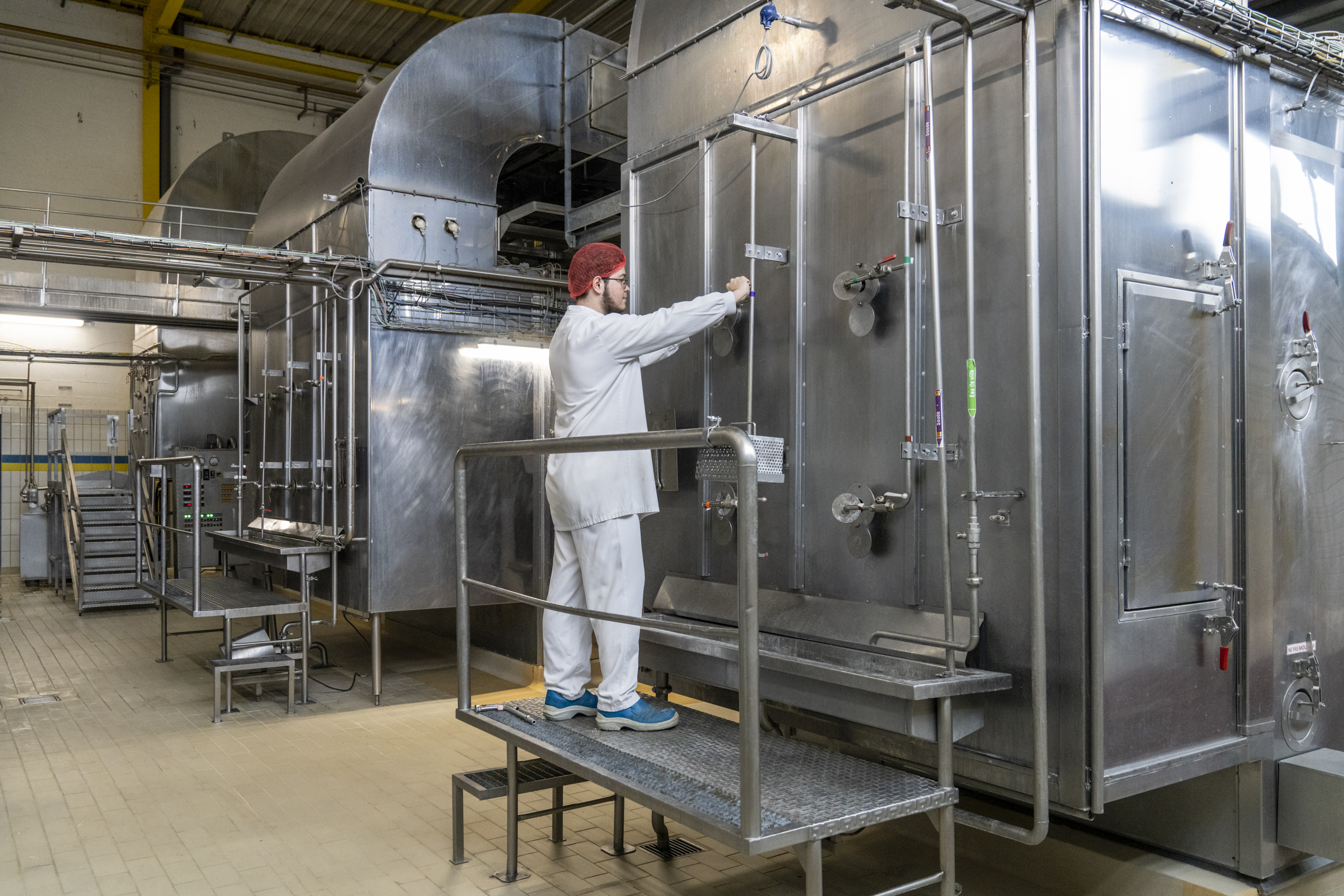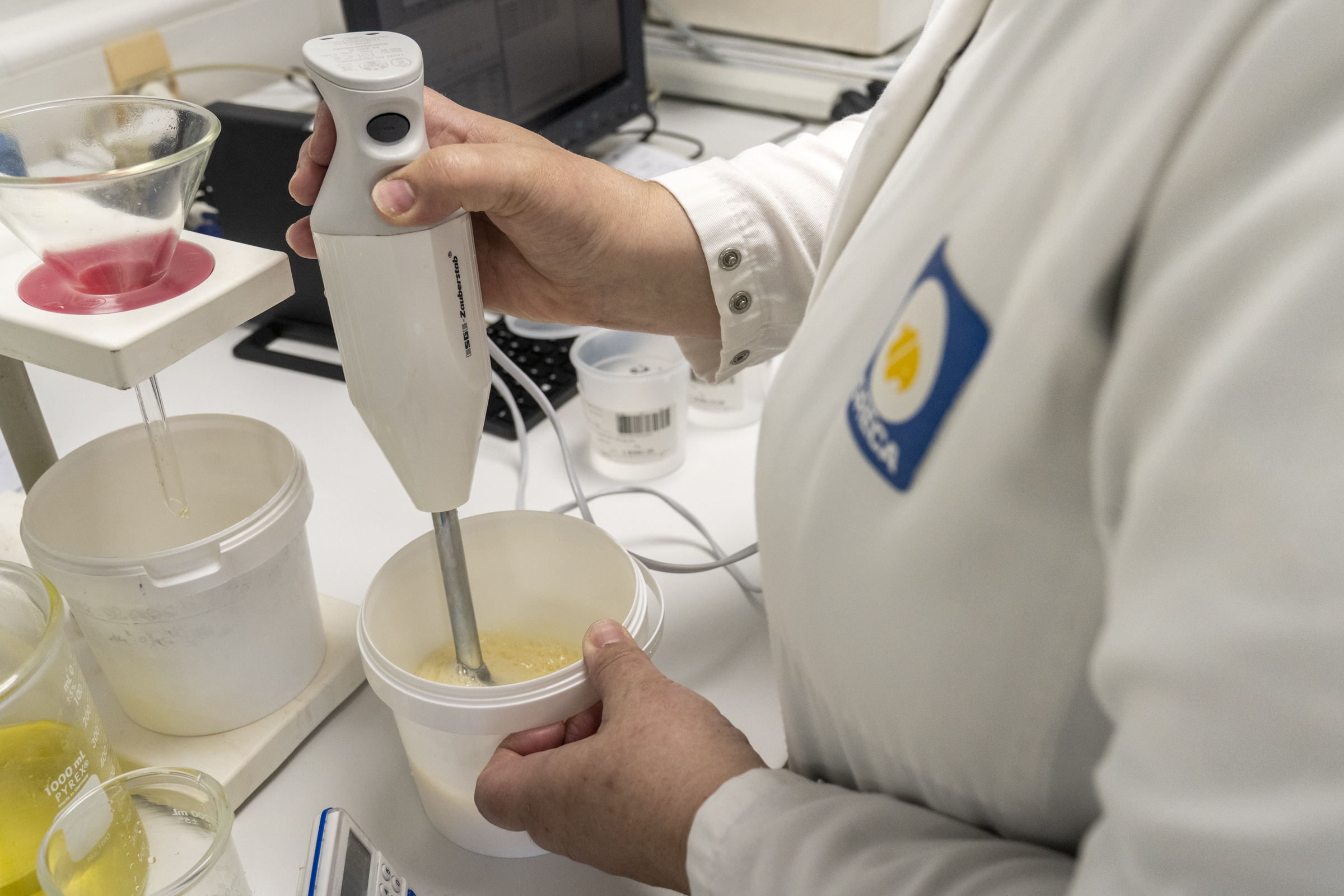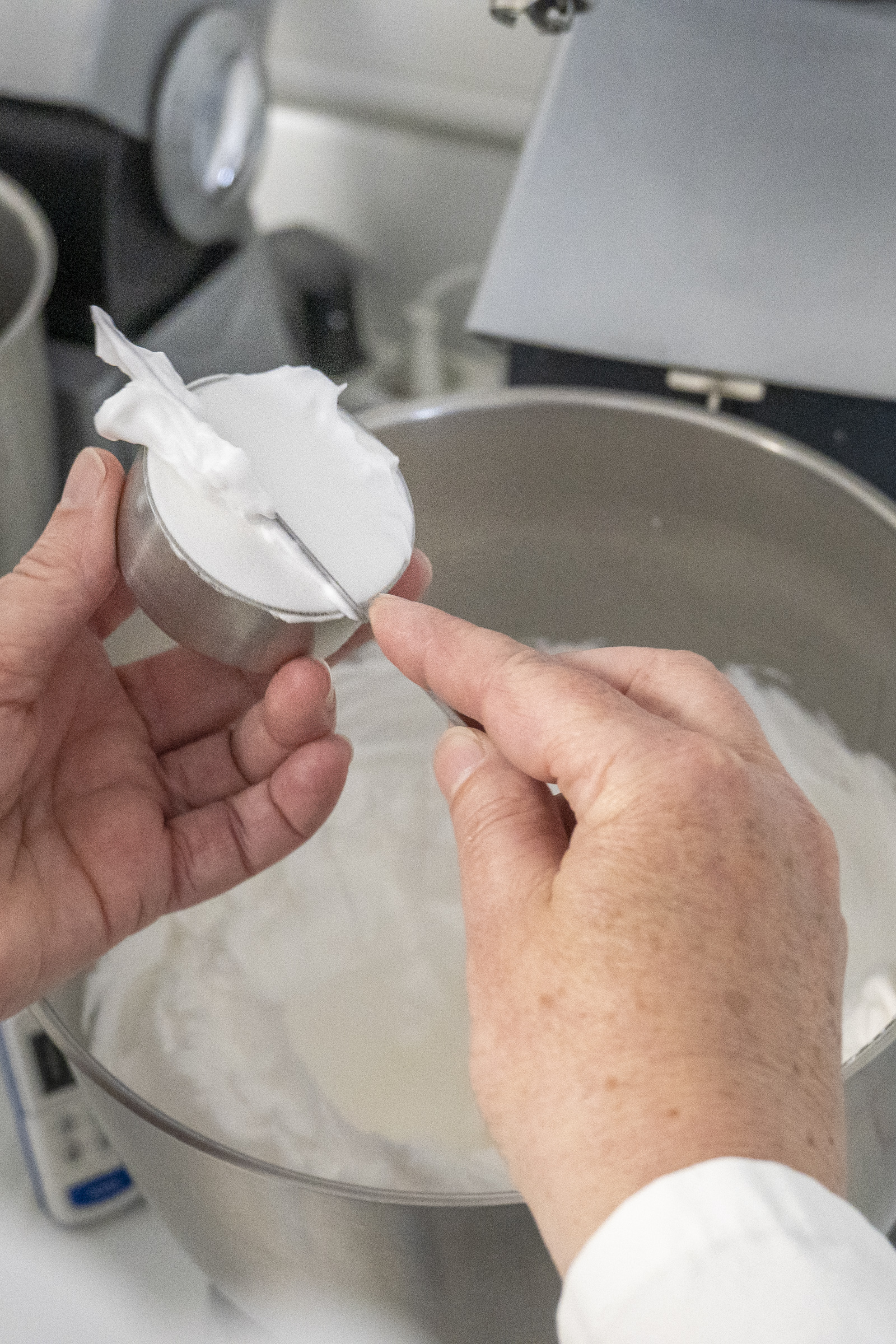Powdered whole eggs have the same nutritional and culinary qualities as a fresh egg. These guarantees arouse the interest of the agri-food industries. Their demanding economic model leads them to use processed eggs, which are impeccable in terms of health, but also easy to store and work with.
Igreca, a pioneer in the implementation of an egg drying process, is able to provide them with egg products packaged in powder form.


The benefits of whole egg powder products (white and yolk)
Depending on customer requirements, Igreca produces egg products based on yolk only, egg white, or both mixed and powdered (whole egg).
For more information on Igreca's powdered products made from whole eggs (price, packaging, quality, origin).
Storage facilities for powdered whole eggs
The food industry uses powdered egg products because of their practical advantages: a processed whole egg is up to four times smaller than a fresh egg. It therefore requires less storage space.
No need for cold storage. Placed in a dry environment, protected from light and at a moderate temperature of 15 to 25°C, whole egg powder can be kept for 12 months (known as the Minimum Shelf Life*).
The nutritional qualities of a fresh egg are preserved in powdered products
A powdered egg product has the same culinary and functional qualities as the original fresh egg. These properties are indispensable to the success of countless pastry recipes (cakes, cookies, tarts), as well as sauces, creams, cocoa-based preparations and certain confectionery products.
The culinary properties of a whole egg reduced to powder (white and yolk)
The emulsifying power of whole eggs is well known. This is due to the lecithin present in the yolk. This lipid facilitates the binding of immiscible ingredients such as oil and water. It gives mayonnaise its creamy texture and chocolate its characteristic melt-in-the-mouth texture. If the egg white foams when beaten, it's thanks to the action of ovalbumin, a protein renowned for its surface-active qualities.
The role of whole eggs in the preparation of your food products: desserts, cookies, sauces...
Yellow and white are also known for their coagulant properties: they solidify under the effect of heat during cooking. Certain recipes (pasta, surimi, confectionery, charcuterie...) gain in consistency and volume.
A powdered egg product maintains all these culinary properties. Only the appearance changes from that of the original fresh egg!
Steps in the manufacture of a powdered whole egg product
This change in nature is the result of a spray-drying technique initiated by Igreca when it set up its plant in 1947.
Drying white and yellow mixtures
The fresh eggs received by the Igreca factory are rigorously sorted and "broken" in a special machine that recovers their contents in a vat.
The whole egg is processed in a sealed chamber. Its contents, still liquid, are pulverized and then dehydrated in contact with very hot air. It becomes a powder packaged in 25 kg bags.


The origin of Igreca's powdered eggs
Igreca has built up its supply network by ensuring that the criteria of its quality charter are scrupulously met by producers. Customers can choose the powdered egg product according to the farming method used by the poultry farmers:
Organic rearing (code 0) provides poultry with an outdoor run, fed exclusively with certified organic produce.
Open-air rearing (code 1) involves outdoor land.
Floor rearing (code 2) takes place in a building where the laying hens have enough space to move around.
To find out about the prices of our whole egg powder products, the type and weight in kilograms of their packaging, and to obtain further information on their quality, origin (France, Europe, and organic, free-range or standard farming methods).
*In 2015, this index replaced the best-before date, or BBD.
Find out more about powdered egg whites, powdered egg yolks and powdered egg products.